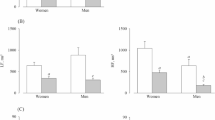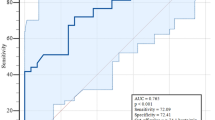Abstract
Racial and ethnic differences in cardiovascular morbidity and mortality persist despite advances in risk factor identification and implementation of evidence-based treatment strategies. African American men and women are disproportionately affected by cardiovascular risk factors, particularly hypertension. In this context, previous studies have identified sex and racial differences in autonomic cardiovascular regulation which may contribute to the development of hypertension and its high morbidity burden among African Americans. In this review, we provide a comprehensive evaluation of the potential pathophysiological mechanisms of blood pressure control and their differences based on sex and race. These mechanisms include obesity-induced sympathetic activation, sympatho-vascular transduction, baroreflex sensitivity and adrenoreceptor vascular sensitivity, which have been the subjects of prior investigation in this field. Understanding the racial differences in the pathophysiology of hypertension and its co-morbid conditions would allow us to implement better treatment strategies tailored to African Americans, with the ultimate goal of reducing cardiovascular mortality in this population.


Similar content being viewed by others
References
Carnethon MR et al (2017) Cardiovascular health in African Americans: a scientific statement from the American Heart Association. Circulation 136(21):e393–e423
Safford MM et al (2012) Association of race and sex with risk of incident acute coronary heart disease events. JAMA 308(17):1768–1774
Van Dyke M (2018) Heart disease death rates among blacks and whites aged ≥35 years—United States, 1968–2015. MMWR Surveill Summ 67(5):1–11
Hyattsville MD (2019) National Center for Health Statistics. Health, United States, 2018. Hyattsville, MD
Parmley WW (2001) African American patients and heart disease. J Am Coll Cardiol 38(5):1577
Roger VL et al (2011) Heart disease and stroke statistics–2011 update: a report from the American Heart Association. Circulation 123(4):e18–e209
Mensah GA et al (2005) State of disparities in cardiovascular health in the United States. Circulation 111(10):1233–1241
Howard G et al (2017) Racial differences in the incidence of cardiovascular risk factors in older black and white adults. J Am Geriatr Soc 65(1):83–90
Graham G (2015) Disparities in cardiovascular disease risk in the United States. Curr Cardiol Rev 11(3):238–245
Finkelstein EA et al (2004) Racial/ethnic disparities in coronary heart disease risk factors among WISEWOMAN enrollees. J Womens Health (Larchmt) 13(5):503–518
Angeles H, Somers SA (2007) From Policy to Action: Addressing racial and ethnic disparities at the ground-level
Gupta DK et al (2015) Racial differences in circulating natriuretic peptide levels: the atherosclerosis risk in communities study. J Am Heart Assoc 4(5):e001831
SS V et al, on behalf of the American Heart Association Council on Epidemiology and Prevention Statistics Committee and Stroke Statistics Subcommittee et al (2020) Heart disease and stroke statistics—2020 update: a report from the American Heart Association. Circulation 2020(141):e1–e458
Pool LR et al (2017) Trends in racial/ethnic disparities in cardiovascular health among US adults from 1999–2012. J Am Heart Assoc 6(9):e006027
American Heart Association (2017) Cardiovascular Disease: A Costly Burden for America - Projections Through 2035. 2017, American Heart Association
Liberati A et al (2009) The PRISMA statement for reporting systematic reviews and meta-analyses of studies that evaluate health care interventions: explanation and elaboration. PLoS Med 6(7):e1000100
Ogden CL et al (2006) Prevalence of overweight and obesity in the United States, 1999–2004. JAMA 295(13):1549–1555
Spraul M et al (1993) Reduced sympathetic nervous activity. A potential mechanism predisposing to body weight gain. J Clin Invest 92(4):1730–1735
Scherrer U et al (1994) Body fat and sympathetic nerve activity in healthy subjects. Circulation 89(6):2634–2640
Grassi G et al (1995) Sympathetic activation in obese normotensive subjects. Hypertension 25(4 Pt 1):560–563
Weyer C et al (2000) Ethnic differences in insulinemia and sympathetic tone as links between obesity and blood pressure. Hypertension 36(4):531–537
Abate NI et al (2001) Overweight and sympathetic overactivity in black Americans. Hypertension 38(3):379–383
Alvarez GE et al (2002) Sympathetic neural activation in visceral obesity. Circulation 106(20):2533–2536
Abbas A et al (2010) Adiposity-independent sympathetic activity in black men. J Appl Physiol 108(6):1613–1618
Esler M, Lambert G, Jennings G (1989) Regional norepinephrine turnover in human hypertension. Clin Exp Hypertens A 11(Suppl 1):75–89
Shibao C et al (2007) Autonomic contribution to blood pressure and metabolism in obesity. Hypertension 49(1):27–33
Marinos A et al (2017) Hypertension in obese black women is not caused by increased sympathetic vascular tone. J Am Heart Assoc 6(11):e006971
Sherwood A et al (2017) Race and sex differences in cardiovascular α-adrenergic and β-adrenergic receptor responsiveness in men and women with high blood pressure. J Hypertens 35(5):975–981
Sherwood A, Hinderliter AL (1993) Responsiveness to alpha- and beta-adrenergic receptor agonists. Effects of race in borderline hypertensive compared to normotensive men. Am J Hypertens 6(7 Pt 1):630–635
Adefurin A et al (2013) Blacks have a greater sensitivity to α1-adrenoceptor-mediated venoconstriction compared with whites. Hypertension 61(4):915–920
Thomas KS et al (2006) Ethnicity, perceived discrimination, and vascular reactivity to phenylephrine. Psychosom Med 68(5):692–697
Stein CM et al (2000) Increased vascular adrenergic vasoconstriction and decreased vasodilation in blacks. Additive mechanisms leading to enhanced vascular reactivity. Hypertension 36(6):945–951
Adefurin A et al (2017) Genetic variation in the alpha(1B)-adrenergic receptor and vascular response. Pharmacogenomics J 17(4):366–371
Johnson JA, Burlew BS, Stiles RN (1995) Racial differences in beta-adrenoceptor-mediated responsiveness. J Cardiovasc Pharmacol 25(1):90–96
Shoemaker JK et al (2015) Neural control of vascular function in skeletal muscle. Compr Physiol 6(1):303–329
Calhoun DA et al (1993) Normotensive blacks have heightened sympathetic response to cold pressor test. Hypertension 22(6):801–805
Ray CA, Monahan KD (2002) Sympathetic vascular transduction is augmented in young normotensive blacks. J Appl Physiol 92(2):651–656
Light KC et al (1987) Effects of race and marginally elevated blood pressure on responses to stress. Hypertension 10(6):555–563
Adamopoulos D et al (2009) Intensified large artery and microvascular response to cold adrenergic stimulation in African blacks. Am J Hypertens 22(9):958–963
Barbosa TC et al (2018) Attenuated forearm vascular conductance responses to rhythmic handgrip in young African–American compared with Caucasian–American men. Am J Physiol Heart Circ Physiol 315(5):H1316–h1321
Neuman RB et al (2016) Nitric oxide contributes to vasomotor tone in hypertensive African Americans treated with nebivolol and metoprolol. J Clin Hypertens (Greenwich) 18(3):223–231
Headley SA et al (1998) Renin and hemodynamic responses to exercise in borderline hypertensives. Ethn Dis 8(3):312–318
Hill LK et al (2015) Perceived control predicts pulse pressure in African American men: the Baltimore study of black aging. Ethn Dis 25(3):263–270
Ford CD et al (2016) Psychosocial factors are associated with blood pressure progression among African Americans in the Jackson Heart Study. Am J Hypertens 29(8):913–924
Taylor JY et al (2017) The combined effects of genetic risk and perceived discrimination on blood pressure among African Americans in the Jackson Heart Study. Medicine (Baltimore) 96(43):e8369
Din-Dzietham R et al (2004) Arterial stiffness is greater in African Americans than in whites: evidence from the Forsyth County, North Carolina ARIC cohort. Am J Hypertens 17(4):304–313
Li S et al (2004) Childhood blood pressure as a predictor of arterial stiffness in young adults: the bogalusa heart study. Hypertension 43(3):541–546
Vranish JR et al (2018) Exaggerated vasoconstriction to spontaneous bursts of muscle sympathetic nerve activity in healthy young black men. Hypertension 71(1):192–198
Briant LJ et al (2016) Quantifying sympathetic neuro-haemodynamic transduction at rest in humans: insights into sex, ageing and blood pressure control. J Physiol 594(17):4753–4768
Vianna LC et al (2012) Influence of age and sex on the pressor response following a spontaneous burst of muscle sympathetic nerve activity. Am J Physiol Heart Circ Physiol 302(11):H2419–H2427
Okada Y et al (2012) Elderly blacks have a blunted sympathetic neural responsiveness but greater pressor response to orthostasis than elderly whites. Hypertension 60(3):842–848
Ogoh S et al (2005) Autonomic nervous system influence on arterial baroreflex control of heart rate during exercise in humans. J Physiol 566(Pt 2):599–611
Fadel PJ et al (2003) Recent insights into carotid baroreflex function in humans using the variable pressure neck chamber. Exp Physiol 88(6):671–680
Holwerda SW et al (2011) Carotid baroreflex responsiveness is impaired in normotensive African American men. Am J Physiol Heart Circ Physiol 301(4):H1639–H1645
Zion AS et al (2003) Low arterial compliance in young African–American males. Am J Physiol Heart Circ Physiol 285(2):H457–H462
Young BE et al (2020) Augmented resting beat-to-beat blood pressure variability in young, healthy, non-Hispanic black men. Exp Physiol 105:1102–1110
Latchman P et al (2013) Spontaneous baroreflex sensitivity in young normotensive African–American women. Clin Auton Res 23(4):209–213
(1996) Heart rate variability: standards of measurement, physiological interpretation and clinical use. Circulation 93(5):1043–1065
Koenig J et al (2014) Body mass index is related to autonomic nervous system activity as measured by heart rate variability—a replication using short term measurements. J Nutr Health Aging 18(3):300–302
Windham BG et al (2012) The relationship between heart rate variability and adiposity differs for central and overall adiposity. J Obes 2012:149516
Rennie KL et al (2003) Effects of moderate and vigorous physical activity on heart rate variability in a British study of civil servants. Am J Epidemiol 158(2):135–143
Kaufmann H (1996) Consensus statement on the definition of orthostatic hypotension, pure autonomic failure and multiple system atrophy. Clin Auton Res 6(2):125–126
Faulkner MS, Hathaway D, Tolley B (2003) Cardiovascular autonomic function in healthy adolescents. Heart Lung 32(1):10–22
Choi JB et al (2006) Age and ethnicity differences in short-term heart-rate variability. Psychosom Med 68(3):421–426
Lampert R et al (2005) Depressed autonomic nervous system function in African Americans and individuals of lower social class: a potential mechanism of race- and class-related disparities in health outcomes. Am Heart J 150(1):153–160
Graziano PA et al (2011) Cardiovascular regulation profile predicts developmental trajectory of BMI and pediatric obesity. Obesity (Silver Spring) 19(9):1818–1825
Kemp AH, Quintana DS (2013) The relationship between mental and physical health: insights from the study of heart rate variability. Int J Psychophysiol 89(3):288–296
Thayer JF, Yamamoto SS, Brosschot JF (2010) The relationship of autonomic imbalance, heart rate variability and cardiovascular disease risk factors. Int J Cardiol. 2009:122–131
Binkley PF et al (1991) Parasympathetic withdrawal is an integral component of autonomic imbalance in congestive heart failure: demonstration in human subjects and verification in a paced canine model of ventricular failure. J Am Coll Cardiol 18(2):464–472
Cygankiewicz I, Zareba W (2013) Heart rate variability. Handb Clin Neurol 117:379–393
Thayer JF, Lane RD (2007) The role of vagal function in the risk for cardiovascular disease and mortality. Biol Psychol 74(2):224–242
Calhoun DA et al (1994) Muscle sympathetic nervous system activity in black and Caucasian hypertensive subjects. J Hypertens 12(11):1291–1296
Acknowledgements
The authors have no acknowledgements.
Funding
This research did not receive any specific grant from funding agencies in the public, commercial, or not-for-profit sectors.
Author information
Authors and Affiliations
Corresponding author
Ethics declarations
Conflict of interest
MCF and RJG have no competing interests to declare. CAS received grant support from the Food and Drug Administration Office of Orphan Products Development, Grant #FD-R-04778-01-A3. CAS has received speaker honoraria from Lundbeck Pharmaceuticals. CAS received consulting honoraria from Lundbeck and Theravance Biopharma. CAS is a member of the Board of the American Autonomic Society.
Rights and permissions
About this article
Cite this article
Farrell, M.C., Giza, R.J. & Shibao, C.A. Race and sex differences in cardiovascular autonomic regulation. Clin Auton Res 30, 371–379 (2020). https://doi.org/10.1007/s10286-020-00723-z
Received:
Accepted:
Published:
Issue Date:
DOI: https://doi.org/10.1007/s10286-020-00723-z




